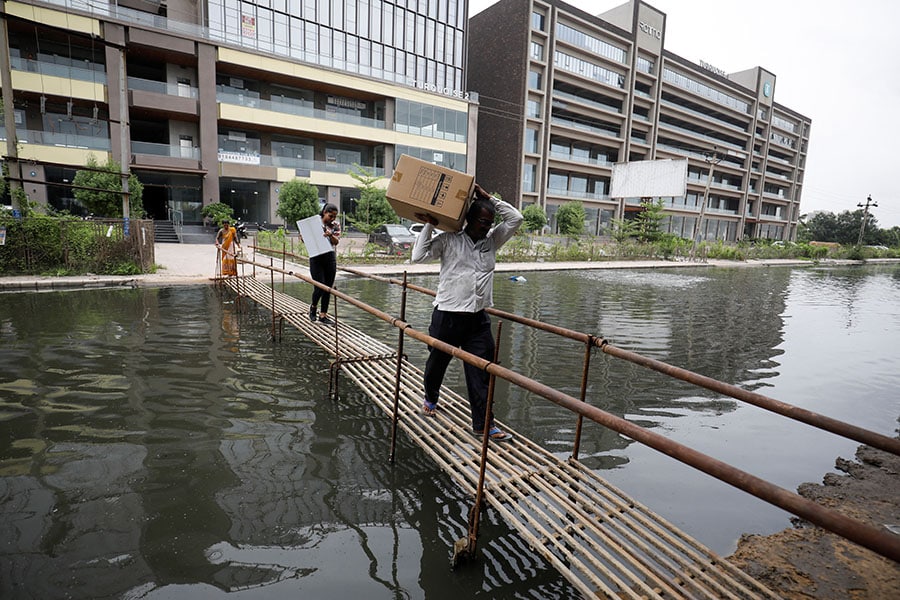
Building resilient infrastructure pertinent to face climate extremities: Amit Prothi
Climate extremities create an extra burden on developing economies, where they grapple with building new infrastructure while operating the existing ones, director general, Coalition for Disaster Resilient Infrastructure, writes
 People walk on a makeshift bridge above a waterlogged street in Ahmedabad Image: Amit Dave/ Reuters
People walk on a makeshift bridge above a waterlogged street in Ahmedabad Image: Amit Dave/ Reuters
Climate extremities have gripped the world and its impacts on people and infrastructure are increasingly evident. Europe is grappling with record-breaking heatwaves with temperatures in Italy soaring to 45°C. Guatemala had declared a state of emergency in the wake of the damages caused by Hurricane Julia last October. The Central American country continues to face heavy rainfall and strong winds since May this year. In Asia, northern parts of India witnessed record rainfall in July this monsoon, resulting in flooding in various parts of Delhi, as river Yamuna spilled over, displacing people and disrupting livelihoods.
 The latest IPCC (AR6—WGII Impacts, Adaptation and Vulnerability) states that 40 percent of the world’s population is vulnerable to impacts caused by climate change, while 1 billion people are at risk from coastal hazards. Target D of the Sendai Framework for Disaster Risk Reduction 2015-2030 also emphasises resilience of critical infrastructure and significant reduction in disaster-related damage. Hence, a focus on Disaster Resilient Infrastructure (DRI) is a promising pathway towards sustainable development. The Coalition for Disaster Resilient Infrastructure (CDRI) speaks about ‘The Resilience Dividend’ in its report on Global Infrastructure Resilience to be launched in October.
The latest IPCC (AR6—WGII Impacts, Adaptation and Vulnerability) states that 40 percent of the world’s population is vulnerable to impacts caused by climate change, while 1 billion people are at risk from coastal hazards. Target D of the Sendai Framework for Disaster Risk Reduction 2015-2030 also emphasises resilience of critical infrastructure and significant reduction in disaster-related damage. Hence, a focus on Disaster Resilient Infrastructure (DRI) is a promising pathway towards sustainable development. The Coalition for Disaster Resilient Infrastructure (CDRI) speaks about ‘The Resilience Dividend’ in its report on Global Infrastructure Resilience to be launched in October.
The Significance of DRI
DRI is defined as infrastructure systems and networks, the components, and assets thereof, and the services they provide, that can resist and absorb disaster impacts, maintain adequate levels of service continuity during crises, and swiftly recover in such a manner that future risks are reduced or prevented.Critical public infrastructure systems such as power, telecommunications, transport, water, education, and health form the foundation over which countries grow their economies. In the developing world, well-functioning critical infrastructure systems are vital for the well-being of citizens, their livelihoods, and crucial in pursuance of their economic goals. Climate extremities create an extra burden on them where they grapple with building new infrastructure while effectively operating the existing infrastructure. As the world urbanises with a greater share of GDP coming from urban economy, vitality of such critical infrastructure becomes even more pertinent.
The failure of one interconnected infrastructure system during a natural hazard can cause a cascading effect on others, paralysing service delivery networks. For example, a power grid failure can disrupt data centres, affecting communications and leaving people and businesses in disarray. That’s where the role of DRI becomes crucial in enhancing overall disaster resilience.








